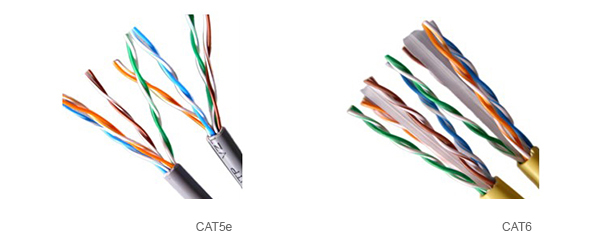- Your #1 Source for Network Cables. Call Now for Exclusive Offers!

Quality is crucial when it concerns any of these cables, so we always advise choosing tested and approved cables. Installing the best cabling that is available is always better. Cat6 is typically a better option and is considered installed for future networks.This article will review the distinctions between Cat5e Plenum UTP Cables and Cat6 cables. Discover the various forms, functions, and qualities of these two categories.
Cat5e is a more recent Cat5 cable specification that supports Gigabit Ethernet rates of up to 1000 Mbps and a bandwidth of 350 MHz. There are four copper wire pairs in it. These cables are twisted considerably more tightly and put through more rigorous standards to eliminate crosstalk or connectivity problems.
Cat6 Ethernet connections can enable data transfer rates of up to 10 Gbps and are made of four twisted pairs of copper wire with 250 MHz of bandwidth. They are used in data centers, smart homes, and school and workplace networking setups. The standard for Ethernet cables everywhere is Cat6 cables.
The transmission’s performance is the main distinction between Cat5e and Cat6 Plenum UTP Cables.
We hope this article on the differences between Cat5e and Cat6 cables was useful. Both of these cables are common options on the market right now. Cat5e and Cat6 cables are excellent options for use in the house. In ideal circumstances, shorter lengths with Cat6 cable can even provide some future-proofing. Contact us right away if you have any additional inquiries about these wires.
Have fun cabling!
Copyright © 2024 TS Cables – All Rights Reserved
